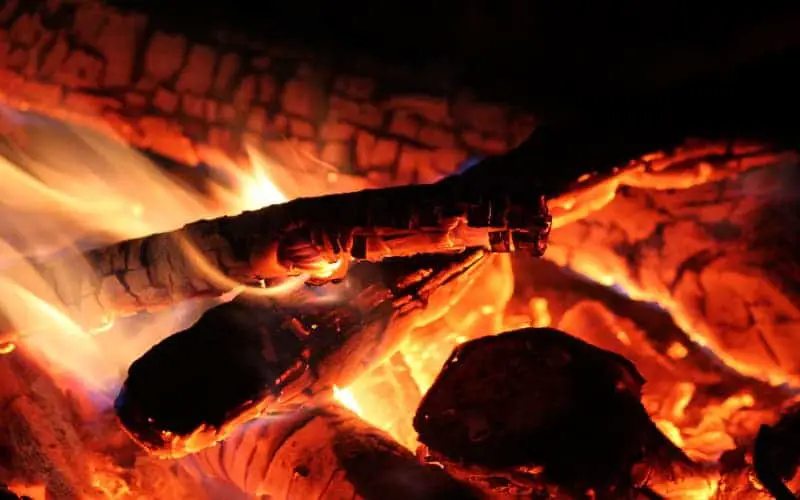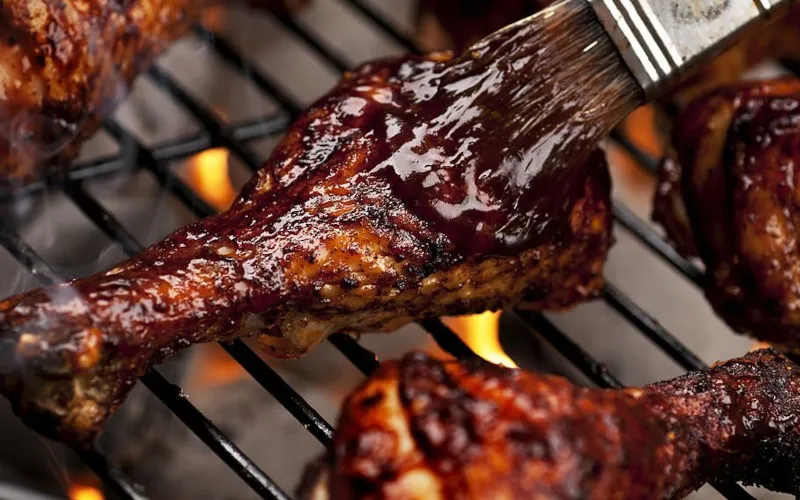Brisket has always been a staple in my household, especially during family reunions and special events. The perfect brisket requires careful attention and patience, but the result is worth it. It’s tender, flavorful, and satisfying in every bite.
However, I’ve come across a question that many of us have asked at some point: Can you overcook a brisket?
Yes, it is possible to overcook a brisket. When brisket is overcooked, it tends to become dry, tough and loses its flavor, which results in an unpleasant eating experience.
In this article, we’ll explore whether it’s possible to overcook a brisket and its impact on the final result.
How to Cook a Brisket?
For starters, choose a good quality piece of meat. The cut should have great marbling, which means it has fat running through its muscle fibers, making the meat flavorful and tender.
Additionally, ensure you have enough time for the cooking process. Brisket isn’t something that can be rushed.
Now onto the cooking process itself. Typically, a brisket takes about 1 hour and 15 minutes to cook for every pound, with an additional 1-2 hours for the meat to rest once it comes out of the oven.
Regarding temperature, 250°F is the sweet spot for low and slow cooking. This ensures the meat is cooked to the center, retaining moisture and tenderness.
Now, let’s break the cooking process down a bit further. Here are some step-by-step instructions on how to cook a brisket:
- The first step is to prepare the brisket by trimming the excess fat from the meat. This will help prevent the brisket from becoming too greasy or fatty during cooking.
- Next, it’s time for seasoning. You can use a dry rub or liquid marinade to add flavor to the meat. A classic seasoning for brisket includes a mixture of salt, pepper, garlic powder, onion powder, and paprika. Rub this generously onto the meat, making sure it covers all sides and reaches into any cuts or crevices on the meat.
- Preheat the oven to 250°F. Once heated, place the seasoned brisket onto a baking sheet or in a shallow roasting pan. Add sliced onions to the pan for flavor and keep the brisket from sticking to the bottom.
- Place the brisket in the oven, and let it cook for the appropriate amount of time based on its weight. During this time, avoid opening the oven door too often, which can release heat and slow the cooking process.
- Once the cooking time is up, remove the brisket from the oven and rest for 1-2 hours. This allows the meat to reabsorb some of its moisture and tenderize even more. Cover the brisket loosely with foil to retain its moisture during this process.
- Finally, it’s time to slice the brisket. Slice against the grain to ensure tender pieces that are easy to chew. Typically, the thicker end of the brisket will have a grain that runs in different directions, so it’s important to pay attention to the grain as you cut.
Can You Overcook a Brisket?
The answer is yes, you can overcook a brisket. Overcooked brisket is usually dry, tough, and flavorless; unfortunately, it’s not a great eating experience. While there is no specific time frame for overcooking, it can easily occur if the meat is exposed to heat for too long.
So, how do you know when your brisket has been overcooked?
There are several signs to look out for. First and foremost, the meat will be dry. Cutting into the brisket should be juicy and moist, but overcooked meat tends to lose moisture and dry.
Another indicator is when the meat has an unappetizing texture—tough and chewy. It should be tender enough to break apart with a fork, but it’s overcooked if you struggle to cut through the meat or have an unpleasant resistance.
Finally, the taste can also indicate that you’ve overcooked the brisket. Brisket should be bursting with delicious flavor, but overcooked meat typically lacks the juiciness and seasoning of a perfect brisket.
So, what’s the impact of overcooking brisket?
When brisket is overcooked, it becomes less tasty and juicy, which makes it less satisfying to consume. Moreover, overcooking results in a loss of some of the nutrients in the meat, which reduces its nutritional value.
In addition, there’s the issue of food safety. Overcooked meat can increase the risk of foodborne illness, giving bacteria more time to grow.
How to Avoid Overcooking a Brisket?
The first step in avoiding overcooking is understanding the recommended cooking time and temperature. Brisket is a tough piece of meat that benefits from low and slow cooking at around 250°F.
However, the cooking time will vary depending on the size of your brisket. A general rule of thumb is to cook the brisket for 1 hour and 15 minutes for every pound of meat, with an additional 30-45 minutes of resting time.
Another important tip to remember is to use a meat thermometer to check the brisket’s internal temperature while cooking. The ideal temperature for a cooked brisket is around 190-205°F.
This will ensure that the brisket is tender and moist without being overcooked. Remember to place the thermometer in the thickest part of the meat, and avoid touching the bone or fat, as this can affect the reading.
It’s also important to consider the smoker or grill you use when cooking your brisket. Different types of smokers will have their own set of instructions and cooking times.
For example, an offset smoker requires more patience since reaching the desired temperature takes longer. Still, it also provides more flexibility in terms of cooking options. On the other hand, a Kamado grill is designed to retain heat more efficiently, leading to quicker cooking times.
Another important factor in avoiding overcooking is giving your brisket enough time to rest after removing it from the heat source. This means letting it sit for 30-45 minutes before slicing to allow the juices to redistribute, resulting in a more flavorful and tender end product.
When it comes to cooking brisket, patience is truly key. Please don’t rush the cooking process or crank the temperature to finish it sooner. Trust the recommended temperature and cooking times, and don’t be afraid to use a meat thermometer to ensure the brisket is cooked to perfection.
In addition to these cooking tips, choosing high-quality meat with ample marbling is important. Fat is essential to the flavor and tenderness of the brisket, so make sure it’s well distributed throughout the meat.
Use a flavor-packed rub or marinade to enhance the meat’s natural flavors, and consider wrapping the brisket in foil during cooking to help retain moisture.
How Do You Make Brisket Super Tender?
There are a few techniques that can be used to make brisket super tender:
- Low and slow cooking: One of the most effective ways to make brisket tender is to cook it at a low temperature (around 225-250 degrees Fahrenheit) for an extended period, such as several hours or even all day. Allowing the connective tissue to break down slowly produces tender and flavorful meat.
- Wrapping in foil: Another technique that can help to make brisket super tender is wrapping it in foil. This creates a moist environment that helps keep the meat from drying out, resulting in a more tender brisket.
- Mopping: Mopping is a technique that involves applying a liquid (such as apple juice or broth) to the surface of the brisket while it is cooking. This helps to keep the meat moist and can contribute to a more tender final product.
- Brining: Brining is a technique in which the brisket is soaked in a saltwater solution before cooking. This helps to tenderize the meat and can result in a more flavorful and tender final product.
- Resting: After the brisket is finished cooking, it is essential to rest before slicing and serving. This allows the juices to redistribute throughout the meat, producing a more tender and flavorful final product.
By using one or more of these techniques, you can help to make your brisket super tender and flavorful.
Frequently Asked Questions
Does Brisket Get More Tender The Longer You Cook It?
Yes, brisket does tend to get more tender the longer you cook it. Brisket is a tough meat cut from the cow’s chest. It has a lot of connective tissue that needs to be broken down to become tender. This process takes time, so brisket is typically cooked for a long time at a low temperature.
A few factors can affect how tender a brisket turns out, including the cooking temperature and method. Generally, it is best to cook brisket at a low temperature (around 225-250 degrees Fahrenheit) for an extended period, such as several hours or even all day.
This allows the connective tissue to break down slowly, resulting in tender and flavorful meat.
It is also essential to keep the brisket moist while it is cooking. This can be done by wrapping it in foil or using a method called “mopping,” which involves applying a liquid (such as apple juice or broth) to the surface of the meat to help keep it moist.
The key to tender brisket is low and slow cooking and patience. With the proper techniques, you can turn a tough cut of meat into a delicious and tender meal.
At What Temp Is Brisket Overcooked?
Brisket is considered overcooked when it reaches an internal temperature of about 210 degrees Fahrenheit. The meat will be very tender at this temperature and may even start to fall apart.
However, it is important to note that the optimal internal temperature for brisket is 180 degrees Fahrenheit. Some people prefer their brisket to be more well-done and may aim for a higher internal temperature. Others prefer a more medium-rare or medium-done brisket and may aim for a lower internal temperature.
Conclusion
Brisket is an incredibly flavorful and satisfying meat, but it can be challenging to cook perfectly every time. Whether you’re a beginner or a pro, it’s essential to understand the best ways to cook a brisket, avoid overcooking, and maximize its flavor and tenderness.
With a little patience, attention, and a few helpful tips, you can create a delicious, perfectly cooked brisket that will leave your guests wanting more.
Remember to choose high-quality meat, use a meat thermometer, stick to the recommended cooking times and temperatures, and let the brisket rest before slicing. It may take some practice, but perfecting your brisket cooking skills is well worth the effort.
So fire up that grill or smoker, get cooking, and enjoy a mouth-watering, perfectly cooked brisket you can be proud of!





